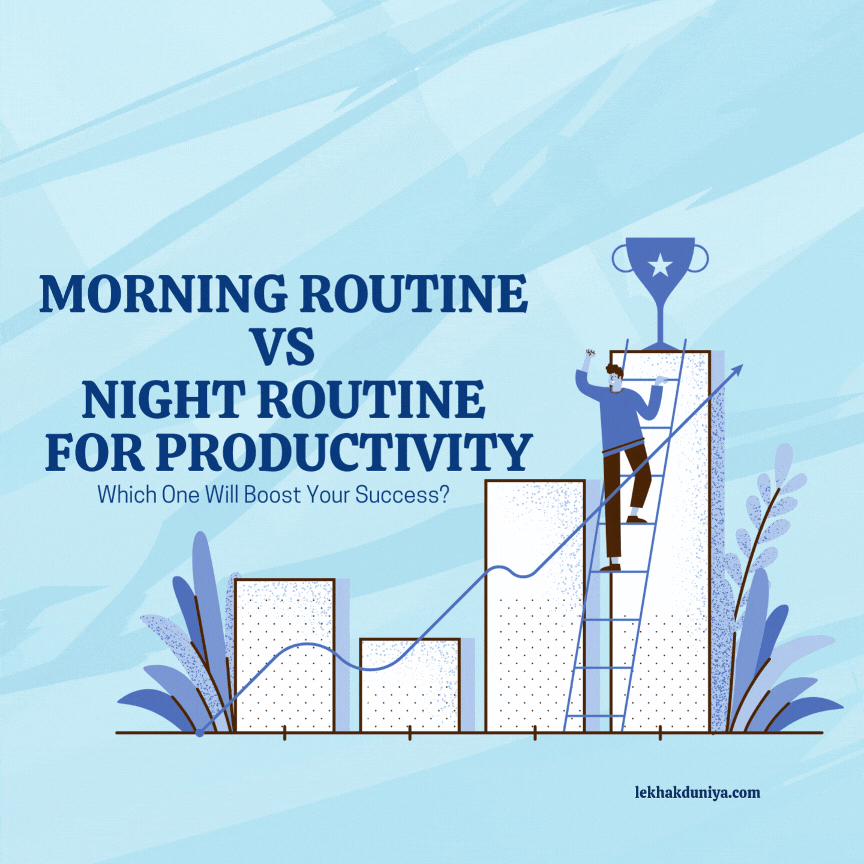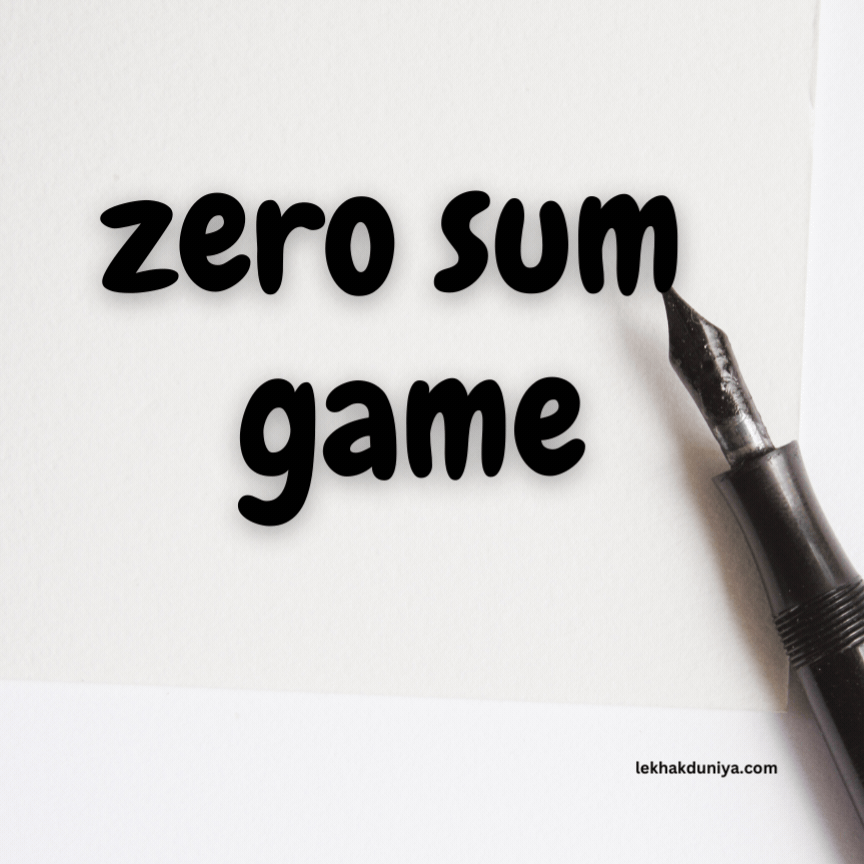The Pomodoro Technique has rapidly become a go-to method for those looking to optimize their time management. It offers a simple yet highly effective way to boost productivity while maintaining mental clarity and reducing burnout. But what exactly is the Pomodoro Technique, and why is it considered such a powerful tool for managing time? In this post, we’ll dive deep into how the Pomodoro works, its benefits, and why it’s favored by students, professionals, and entrepreneurs alike.
Table of Contents
What Exactly is the Pomodoro Technique?
The Pomodoro Technique is a time management system that breaks work into short, focused intervals, typically lasting 25 minutes. After each 25-minute interval, called a Pomodoro, you take a short break. After finishing four Pomodoros, take a longer break to recharge. This cycle of focus and rest not only improves concentration but also helps you avoid mental fatigue.
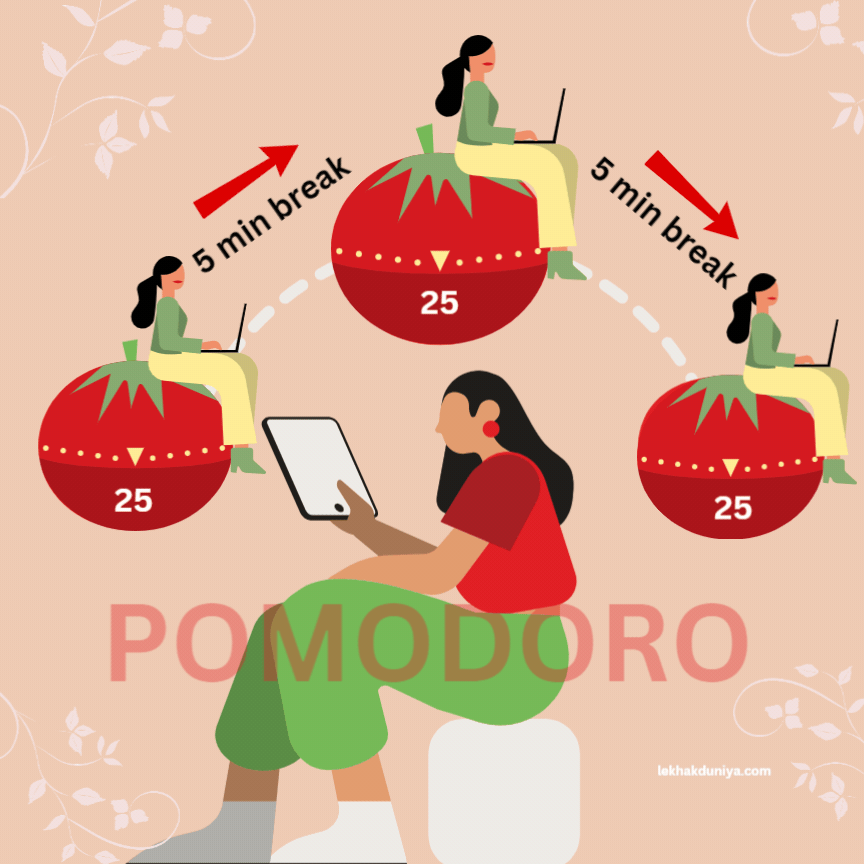
Developed by Francesco Cirillo in the late 1980s, the method was named after the Italian word for tomato, inspired by Cirillo’s tomato-shaped kitchen timer. Today, this technique is widely used as a powerful tool to beat procrastination and stay on task.
How the Pomodoro Technique Works
The true power of the Pomodoro Technique comes from its straightforward approach. Here’s how you can simply implement it:

- Choose a task: Select a task you want to focus on.
- Set your timer for 25 minutes: This represents one Pomodoro.
- Work on the task: During this 25-minute window, focus solely on the task at hand.
- Take a short break: After the timer goes off, rest for 5 minutes.
- Repeat: Once you’ve completed four Pomodoros, take a longer break, usually 15-30 minutes.
This technique is designed to reduce the feeling of overwhelm and make large tasks more manageable by breaking them down into small, timed sessions.
The Psychological Benefits of the Pomodoro Technique
The Pomodoro Technique is not just about time management—its effectiveness is rooted in psychology. Here’s why it works so well:
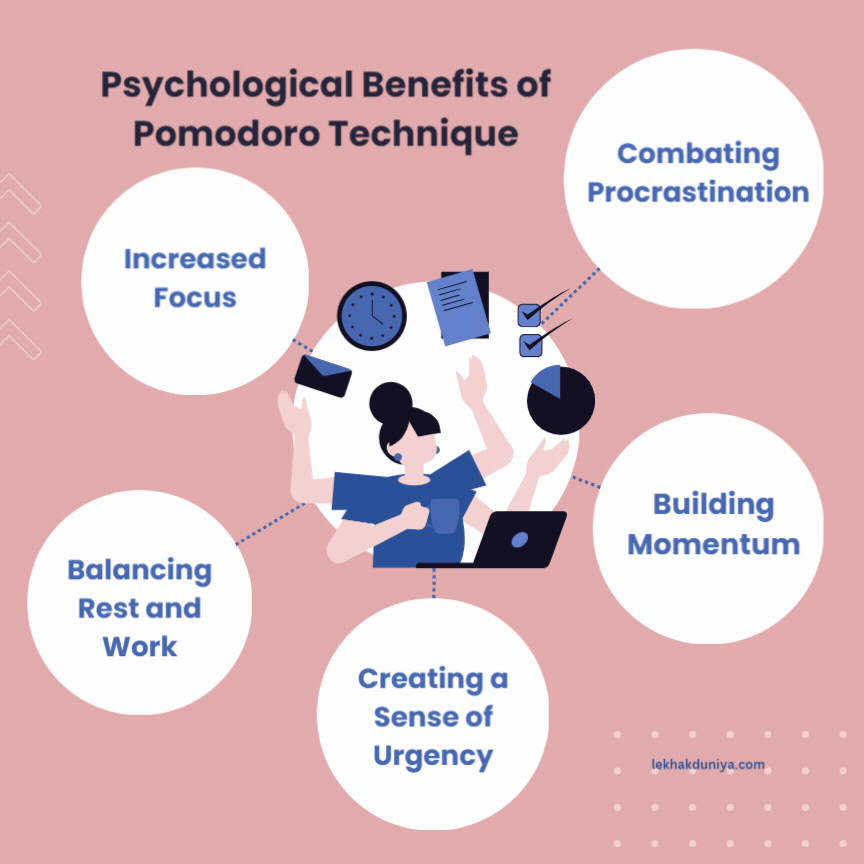
- Increased Focus: The 25-minute time frame is long enough to make meaningful progress but short enough to keep you engaged without getting distracted.
- Combating Procrastination: This method breaks tasks down into bite-sized intervals, making it easier to start tasks that might otherwise seem daunting.
- Balancing Rest and Work: Regular breaks give your brain a chance to reset, improving both focus and productivity. This technique ensures that you never work for too long without a break, reducing mental exhaustion.
- Creating a Sense of Urgency: The ticking timer of the method creates a subtle sense of urgency, pushing you to get more done in less time.
- Building Momentum: Completing each Pomodoro provides a small, but significant, sense of achievement. These small wins build momentum and motivation as the day progresses.
Who Should Use the Pomodoro Technique?
The great thing about this technique is that it’s adaptable for anyone looking to improve their productivity. It’s perfect for:
- Students: Studying for long hours can be draining, but breaking study sessions into Pomodoros makes learning more digestible.
- Freelancers: Managing multiple tasks or projects becomes easier when you can organize your time into focused intervals.
- Office Workers: The Pomodoro Technique can help with completing routine tasks while staying on top of deadlines in a distraction-filled environment.
- Creatives: Writers, designers, and other creatives can use the Pomodoro Technique to stay focused and avoid the dreaded creative block.
Step-by-Step Guide to Implementing the Pomodoro Technique
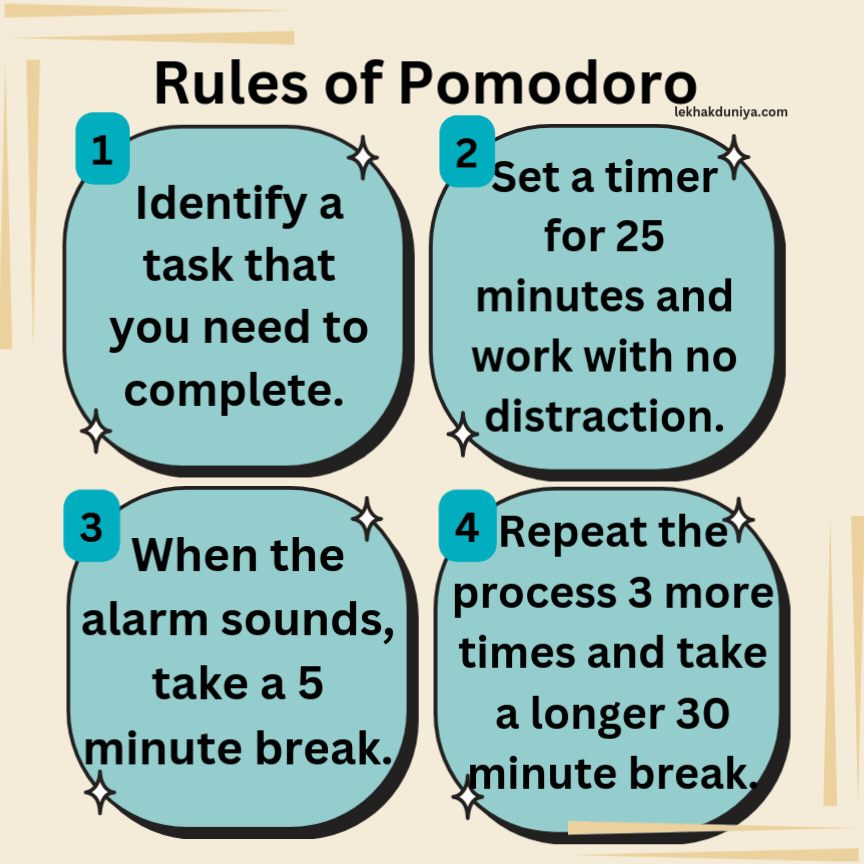
If you’re ready to take control of your time with the Pomodoro Technique, follow these simple steps:
- Plan Your Task: Before starting, decide what you’ll focus on during each Pomodoro session.
- Set the Timer: Set a timer for 25 minutes, signaling the start of your first Pomodoro.
- Work Without Distractions: Concentrate solely on the task during the entire 25 minutes. Ignore emails, social media, or anything else that might divert your attention.
- Take Your Break: Once the Pomodoro ends, step away from your work for 5 minutes to recharge. Use this break to stretch your legs, enjoy a light snack, or simply unwind for a few moments.
- Repeat the Process: After four Pomodoros, take a longer break to rejuvenate.
Why the Pomodoro Technique Boosts Productivity
This technique has several features that make it especially effective at enhancing productivity. Here’s why you should try the Pomodoro Technique:

- Promotes Accountability: Each 25-minute session is a small, dedicated window of time, holding you accountable for that period. You know when the clock is ticking, so you naturally try to make the most of it.
- Manages Distractions: This technique helps you resist distractions by encouraging short bursts of focus. Instead of checking your phone or email every few minutes, you know there’s a break coming soon, so it’s easier to wait.
- Enhances Time Management: As you become more familiar with the technique, you can begin to estimate how many Pomodoros different tasks will take, helping you plan your day more effectively.
- Reduces Decision Fatigue: The clear structure of the method removes the need to constantly decide what to do next. You focus for 25 minutes, rest, and repeat.
Best Tools for the Pomodoro Technique
Many tools and apps can help you implement the Pomodoro Technique more easily. Here are some popular options:
- Pomofocus: A minimalist timer that tracks your work and break intervals.
- Focus Booster: An intuitive app that helps you track your productivity over time.
- Be Focused: A mobile app perfect for on-the-go users who want to stay productive no matter where they are.
Mastering the Pomodoro Technique: Key Tips
To make the most of the Pomodoro Technique, try implementing these effective strategies:
- Be Consistent: The more regularly you practice the technique, the easier it becomes to maintain focus during each session.
- Track Your Progress: Keeping a log of how many Pomodoros you complete each day can help you measure productivity and identify areas for improvement.
- Optimize Breaks: Use your breaks wisely. Stand up, move around, and give your mind a proper rest to return refreshed for the next Pomodoro.
- Adapt the Technique: If 25 minutes feels too long, start with shorter intervals and build up to a full Pomodoro.
The Pomodoro Technique is one of the simplest and most effective tools for time management. By dividing your workday into focused intervals, this technique helps you stay on track, combat distractions, and improve productivity. Whether you’re a student, a professional, or anyone looking to enhance their time management skills, the Technique can provide the structure and clarity needed to achieve your goals.
If you are not using this Technique, give it a try. You’ll be amazed at how such a simple method can significantly improve your focus and productivity.



